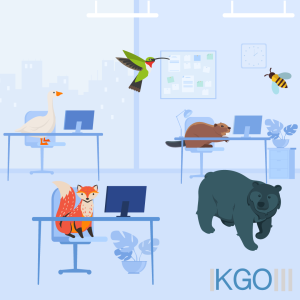If you hired someone five years ago, it was safe to assume they would be willing to come into the office every weekday during work hours. Now, nearly two years after the first COVID-19 case was reported in the U.S., employee expectations have changed. People have become accustomed to working from home in their ideal setting and fewer people want to commit to commuting to an office daily.
In a time where workers are hard to keep and even harder to come by, companies are desperate to fulfill employee’s requests.. While this may cause employer hesitation in bringing people back into the office, it can be most effective for everyone to have a space available for collaboration, team building, and focus. In a recent study done jointly by Forrester Research on behalf of Atlassian, people who work in highly collaborative companies report 69% greater innovation, 56% report enhanced employee productivity, and 53% report improved customer satisfaction. There is also a large benefit to collaborative spaces for employees. According to a recent study done by PWC, 87% of employees say the office is important in collaborating with their team and building relationships. Both of those are employees’ top-rated needs for an office setting.
What can you do to create a productive environment to support your employees’ unique needs?
KGO’s Director of Innovation and Change, Mathew Xavier, believes the solution lies in each team member’s work personas. These personas show that every employee has generalized work habits and practices that fall into one or more of six different categories. You can find a breakdown and in-depth description of each key persona role in our recent blog post, The Key to Successful Hybrid Working: Identifying Personas.

Once you know your employees’ personas, you can adapt your workspace to better meet their needs. For employers, utilizing personas provides for the most flexibility in making your hybrid working program effective and efficient. In a time where workers are already hesitant to come back to the office, it’s important to make sure their time at the office is spent welli and that your organization has created an environment that people can’t get at home.
Before you adapt your office to fit the needs of your team, you should be familiar with the different types of workspaces:

Team-Centric Workspaces
These spaces foster collaboration between team members and provide a place for any number of people to meet. While some follow a traditional conference room style, others are less formal – such as a series of booths near a café space or socializing areas. Most beneficial to professionals in designer, creative, analyst, marketing, or human resources roles.

Focus-Centric Workspaces
This is a work environment where deep focus can happen. The makeup of the space should encourage concentration, such as a library area or quiet series of nooks. It doesn’t necessarily need a desk, but there should be established etiquette and protocols that allow people to put their head down without disruption. Most beneficial to professionals in research, development, or analyst roles.

Professional Growth-Centric Workspaces
These spaces allow team members to further their education and can be used for mentoring or updating employees’ certifications. They include meeting areas, learning spaces with whiteboards, and learning nooks that go beyond the purpose of a traditional conference room. Most beneficial to professionals in analyst, marketing, human resources, research, development, sales, or executive team roles.

Community-Centric Workspaces
These spaces are put in place to build community between team members. They may include café areas, promenades, team building areas, or any other space that would allow connecting as a group or team. Most beneficial to professionals in engineering, web development, IT, sales, executive team, designer, or creative roles.
When planning employees’ time in the office and work environment, consider each persona’s needs and preferences. For example, Highly remote workers spend their time in the office collaborating with others to advance their work. They are generally more inclined to focus at home, so requiring them to come in for everyday work would be less efficient for both you and them.
What environment will your team be the most efficient in? What environment will your team be happiest in? These are the two most important considerations when planning the construction or reorganization of your office space. The process of restructuring an office can be incredibly complicated and tedious, not to mention expensive.
At KGO, we have experts in every facet of relocating or restructuring a workplace. Our Strategy and Consulting Team has decades of combined experience as well as an in-house proprietary tool called the Space Optimizer that can help you make informed real estate decisions based on market trends.